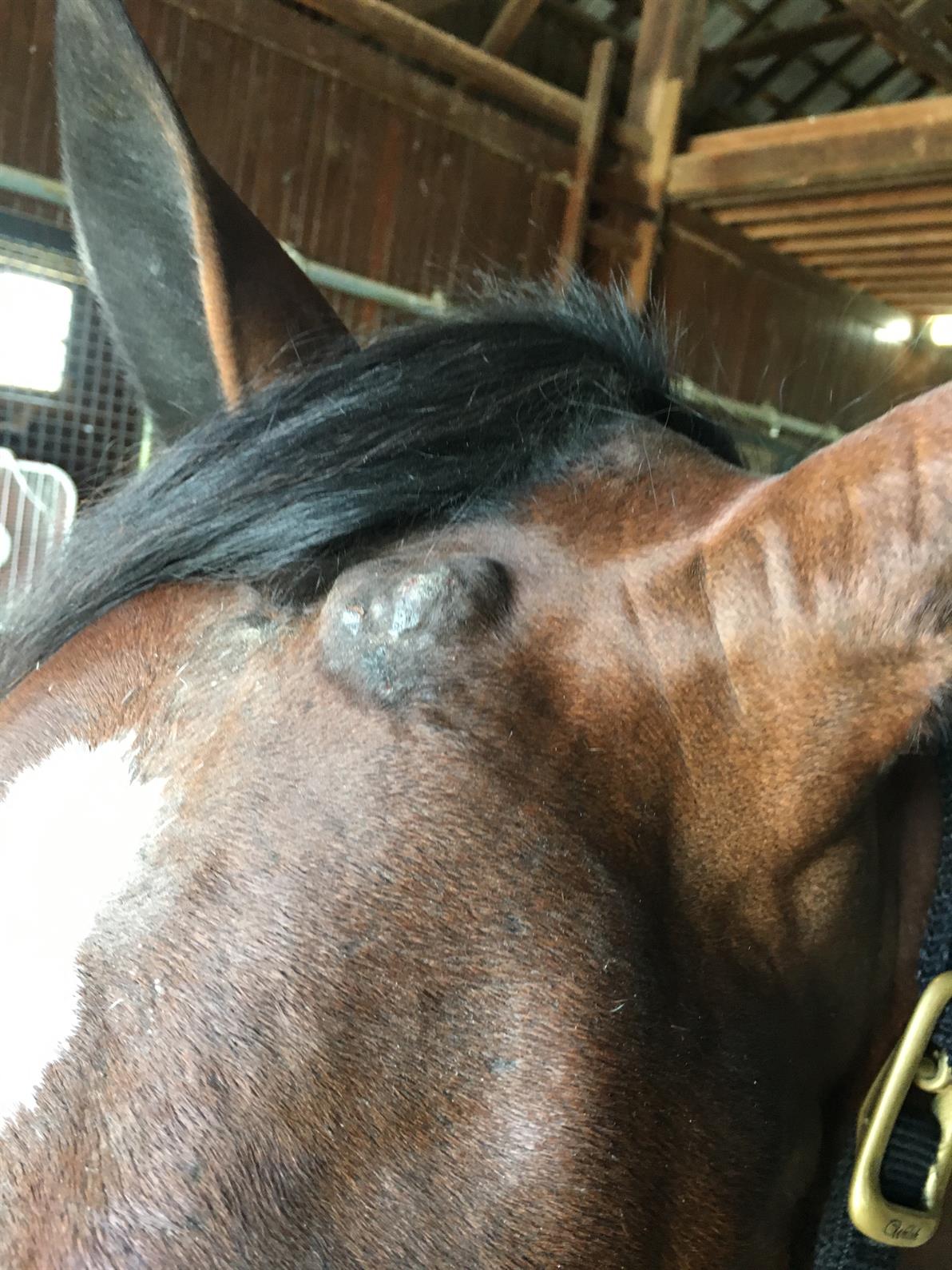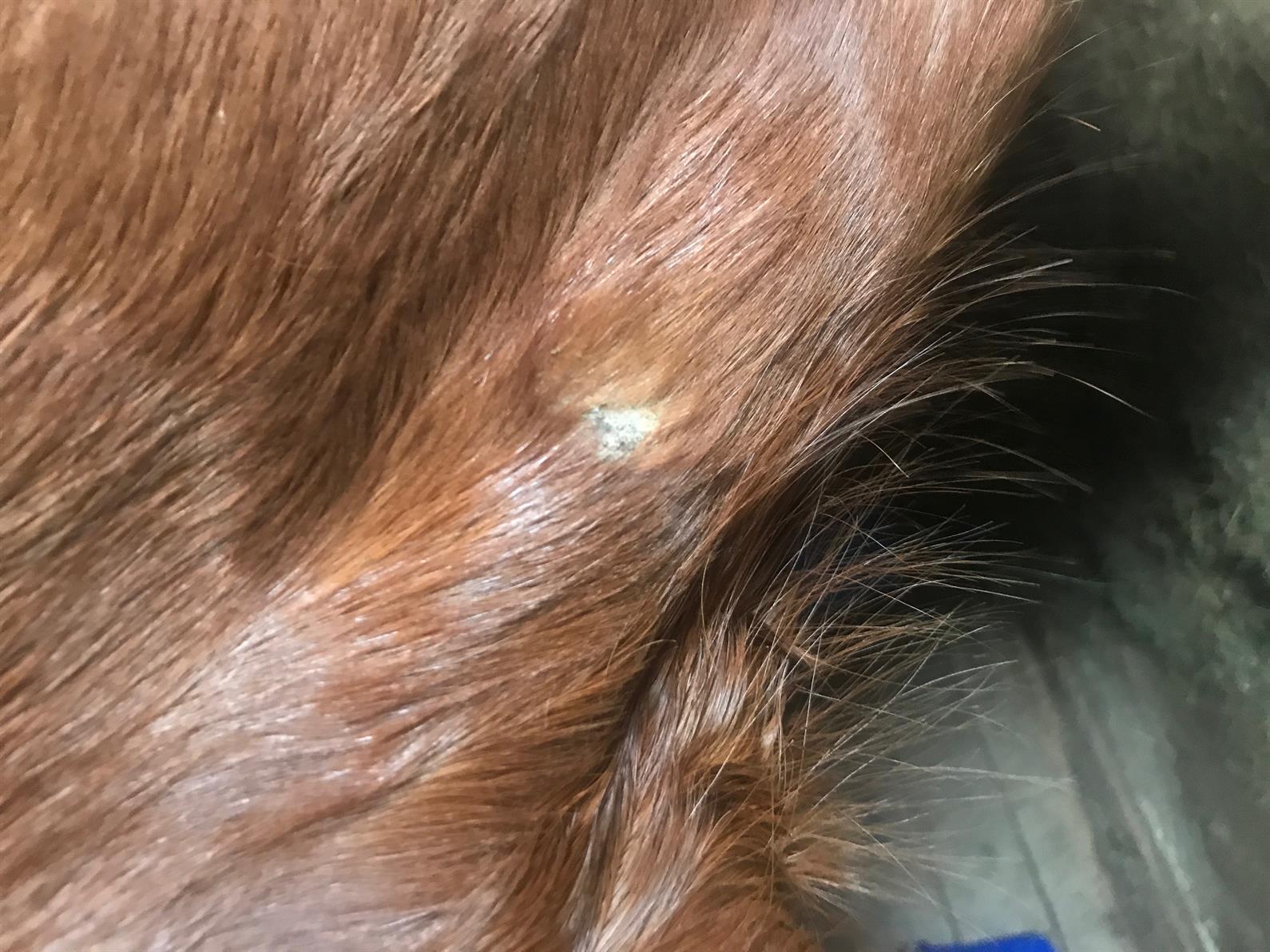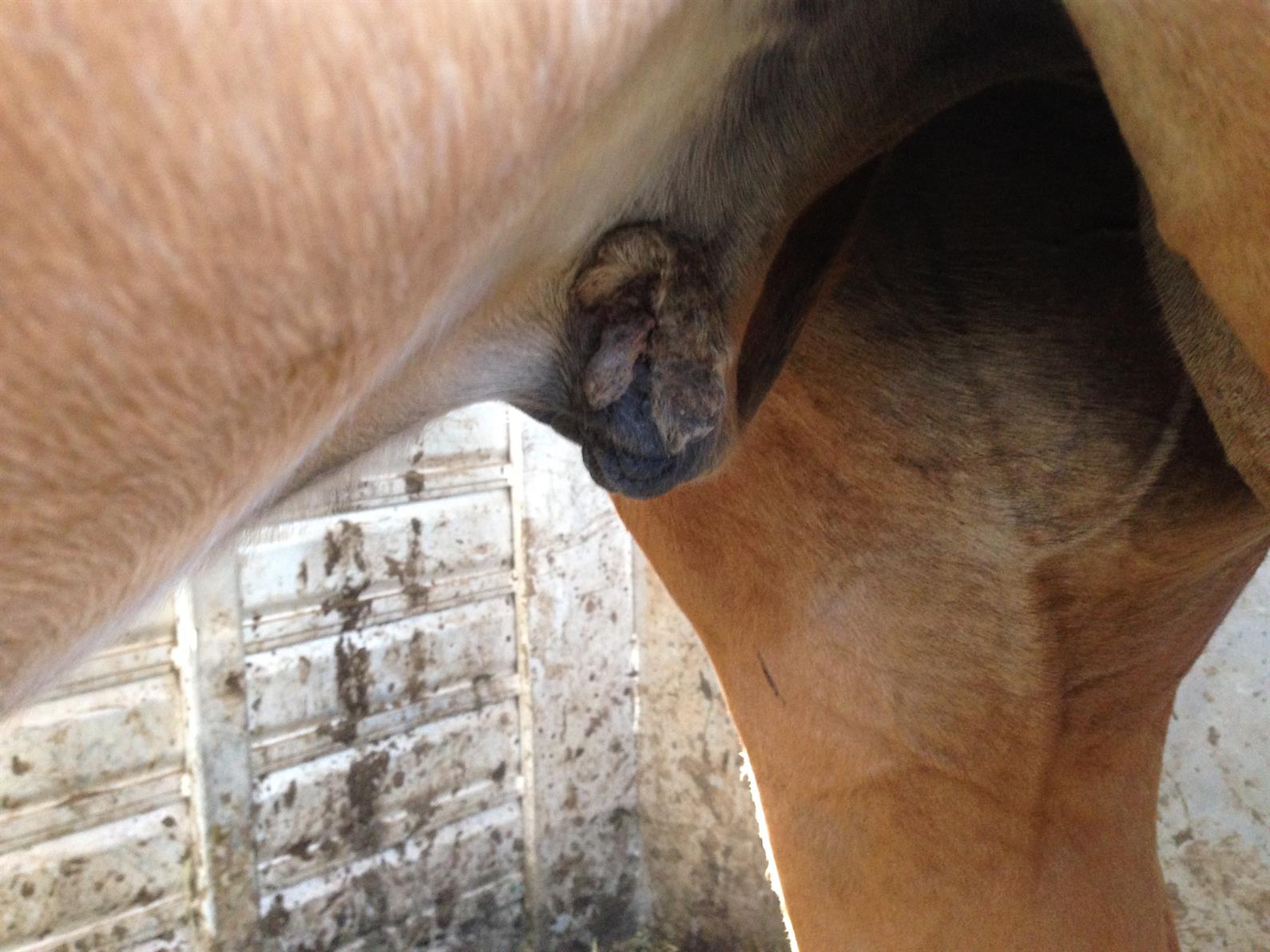Sarcoids are the most common skin tumors diagnosed in horses and ponies. Although they’re not usually regarded as life-threatening, they can be unsightly and uncomfortable for the horse, depending partly on the tumor’s location.

Photo: Dr. Liz Barrett
“They’ll infiltrate the local tissue and skin, but they’re not like a tumor that will metastasize and spread to the lungs or liver or different organ systems,” said Dr. Rana Bozorgmanesh of the Hagyard Equine Medical Institute. “They’re exclusively in the skin.”
“We don’t know exactly what causes them. There is an association with bovine papillomavirus; bovine papillomavirus has been identified in sarcoid tissue, but we don’t know exactly how or why the tumors come about. There is some thought that it’s not due to that virus alone and that there also might be some genetic predisposition associated with tumor development.”
How worrying are sarcoids?
“It depends on where it is, how big it is, and how fast it’s growing,” said Bozorgmanesh. “Some of them don’t grow that much or that quickly, but for the ones that do grow, it’s not going to kill your horse, but it is going to get in the way of things like tack, and it will irritate your horse. It’s not a life-and-death situation, but the main thing to point out is that the sooner and more aggressively you start treating a sarcoid, the easier it’s going to be. The bigger the lesion, the harder it is to treat. So even though it might not be that alarming initially, you may want to get it taken care of before it does reach that stage.”
Spotting a Sarcoid
Sarcoids can vary widely in size and appearance, which makes diagnosing them definitively very difficult without a biopsy. They tend to be hairless and they are often grayish in color, but there are six clinical types of sarcoid whose characteristics range from flat and circular to raised and nodular, from ulcerated or raw and bloody on the surface to dry and flaky. They can appear singularly or in groups. Most grow relatively slowly, but one very rare aggressive type, the malevolent sarcoid, can grow rapidly and spread through the skin.

Photo: Dr. Rana Bozorgmanesh
“My rule of thumb is that if you have a hairless skin lesion, it’s a sarcoid until proven otherwise,” said Bozorgmanesh. “That obviously would exclude things like scars or abrasions, but if there’s something in the skin of a horse that is hairless and is not going away, it’s most likely a sarcoid. But they do come in many shapes and sizes, so there’s not one hard and fast rule that is going to tip you off that it is a sarcoid. The only real way to know is to biopsy.”
If you suspect your horse has a sarcoid, the best first step is to call your veterinarian, who can apply a trained and experienced eye to the situation and, if necessary, recommend a biopsy.
“Sometimes you can make a strong assumption based on what it looks like, but often, to be 100% sure, you’ll want to biopsy the area,” explained Bozorgmanesh. “But if you biopsy it, you have to be willing to treat it, because, it is thought that biopsying the area can make the cells of the sarcoid itself “angrier,” so it’s more likely to grow and become more infiltrative.”
To avoid that scenario, a vet might simply remove the whole sarcoid as part of the treatment and then send the entire tumor for analysis, rather than taking a sample of it to biopsy.
A Variety of Treatment Options
In weighing treatment options, your vet will consider a number of factors, including the type of sarcoid, how aggressive it is, its location and size, how well the horse or pony is likely to tolerate a particular treatment, and more. Cosmetic outcome is another potential factor, especially for show horses or ponies: some treatments might be more likely to leave white hairs, for example.
“It’s difficult to give a prognosis in a word,” Bozorgmanesh said. “The main concern with sarcoids is that they do recur, so prognosis very much depends on that recurrence rate. When you look at a sarcoid, what you see is the tip of the iceberg. What you see on the surface of the skin is not the full extent of the sarcoid. They have these fingerlike projections that project into the skin, so even if you think you’re cutting out the sarcoid or applying cream to the sarcoid, there’s actually a wider area that is affected by the sarcoid. If any of the treatments are performed and leave even a microscopic amount of tumor, it’s going to come back. That’s why treatment can be so difficult.”

Photo: Dr. Rana Bozorgmanesh
The good news is that there are a number of different ways to tackle a sarcoid, from topical creams to surgical excision to immunotherapy.
“There are a few papers that have been published looking at different treatment modalities and their success rates,” Bozorgmanesh said. “There are a lot of newer products out there that haven’t had the scientific studies on hundreds of cases yet for us to know success rates.”
Here again, it’s worth talking to your vet about what options will best suit your horse or pony.
- Surgical resection, or surgical removal of the sarcoid. “If you’re doing this, you want to get wide surgical margins,” said Bozorgmanesh. “You want to get those fingerlike projections as part of what you’re cutting out. This has variable success. The tumors do often recur when you do surgical resection alone, and that’s simply because it’s so difficult to get every single tumor cell. So if you only cut it out (without any additional therapy), it may back within six months. If the tumor is in an area where you can get huge margins—maybe there’s a lot of loose skin and you can cut a large area—then you may have better success with that. But, unfortunately, a lot of these sarcoids are in locations where you can only get a few millimeters of margin.”
- Cisplatin injection. “This technique has had one of the best success rates, and there’s a big study out on several hundred horses,” said Bozorgmanesh. “Cisplatin is a chemotherapy agent. If necessary—for example, if the tumor is huge, we try to debulk it [remove as much of it as possible] surgically first. So we’ll do a surgical resection, then follow up by treating the scar line with cisplatin.”
The cisplatin is injected into the sarcoid site and all around it. “You have to repeat it every two to three weeks for four to six treatments,” Bozorgmanesh said. “Depending on the location of the site, you might have to do this under general anesthesia, but sometimes you can do it under standing sedation.”
- Topical creams or ointments. “There are a variety of lotions and creams you can apply,” Bozorgmanesh explained. “Some are more effective the more superficial the lesion and if you debulk the tumor first. These products are easy to put on, so the owner can do it themselves: they wear gloves and put it on every couple of days. But it can take up to 32 weeks of treatment for the sarcoid to resolve, and some horses don’t like it. Some of them can burn, and some horses aren’t tolerate of that over multiple treatments.”
- Immunostimulants. “There are a couple of immunostimulant drugs that can be injected into the lesion,” Bozorgmanesh said. “That’s pretty new, and I think so far it has had variable success. We’ve had some cases in which the tumor has completely resolved, and other cases where it hasn’t really worked. We need more research into these products to know what the outcome is likely to be.”
Can You Prevent Sarcoids?
Given the uncertainty surrounding sarcoids’ exact cause, it’s hard to take specific preventive measures. It’s possible that keeping flies down and using general good barn hygiene might also contribute to sarcoid prevention.
“Bovine papillomavirus DNA has been found in flies,” explained Bozorgmanesh. “It has been suggested, and some people have found, that the sarcoids actually occur where previous injuries were: where a horse has had a laceration or an abrasion, they develop a scar there, and then a sarcoid pops up in that location. That’s why people are wondering whether the flies are actually carrying it. Flies will go to a wound, so maybe that’s how the viral cells are introduced to the area and then a sarcoid pops up. Until we know more about that, I’d recommend good fly protection.
“We don’t know for sure whether sharing tack or that kind of thing can spread it, but using good disinfection techniques on tack and other things might be pertinent as well.”
Want articles like this delivered to your inbox every week? Sign up to receive the Equestrian Weekly newsletter here.
This article is original content produced by US Equestrian and may only be shared via social media. It is not to be repurposed or used on any other website than USequestrian.org.


